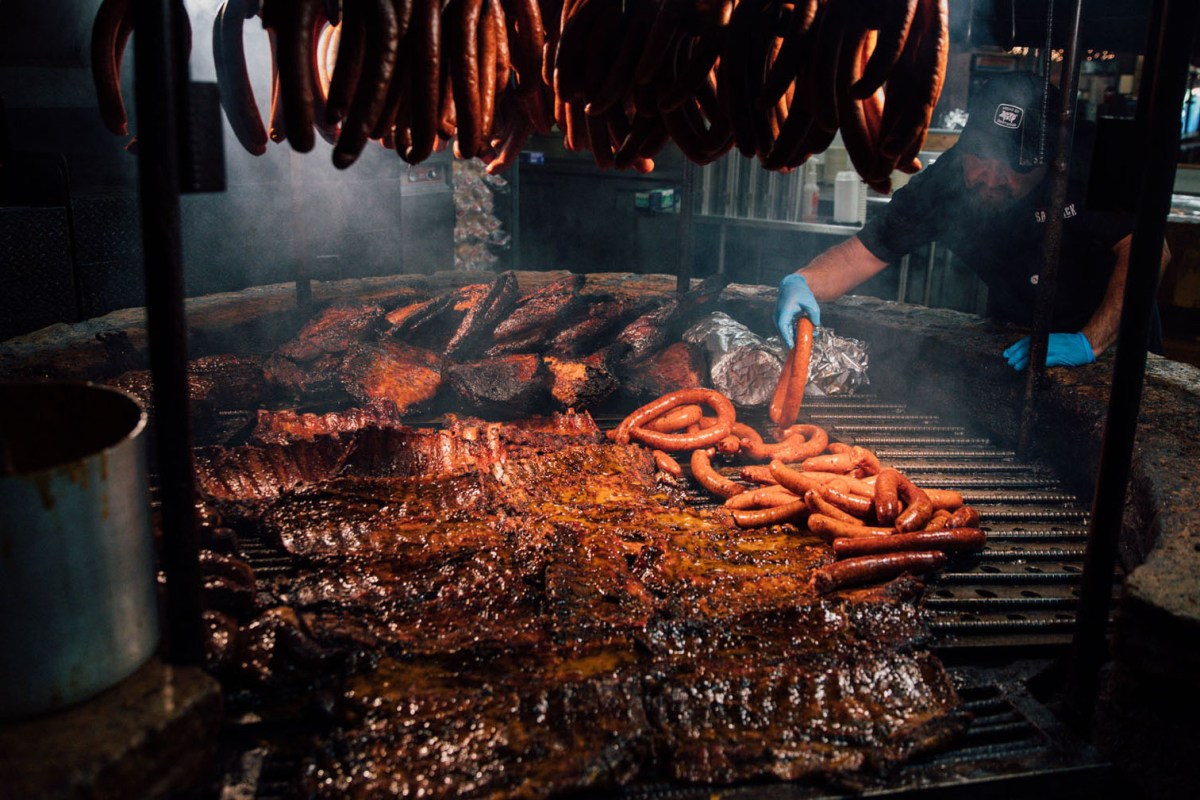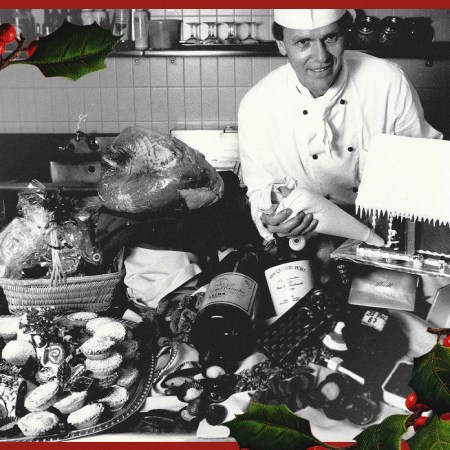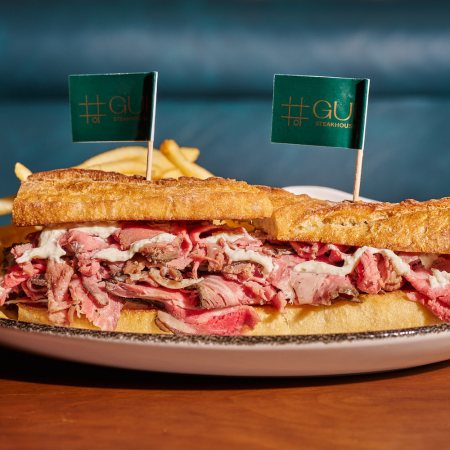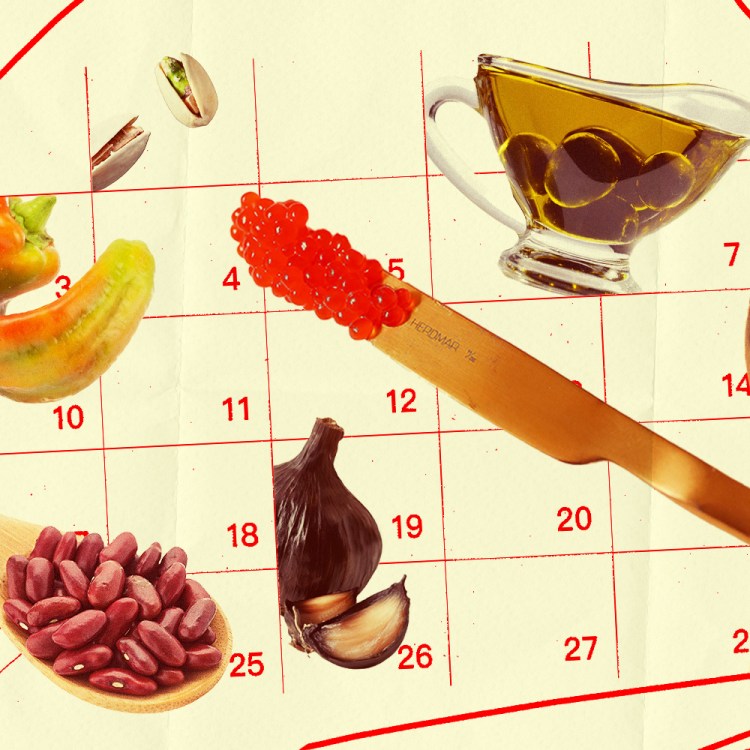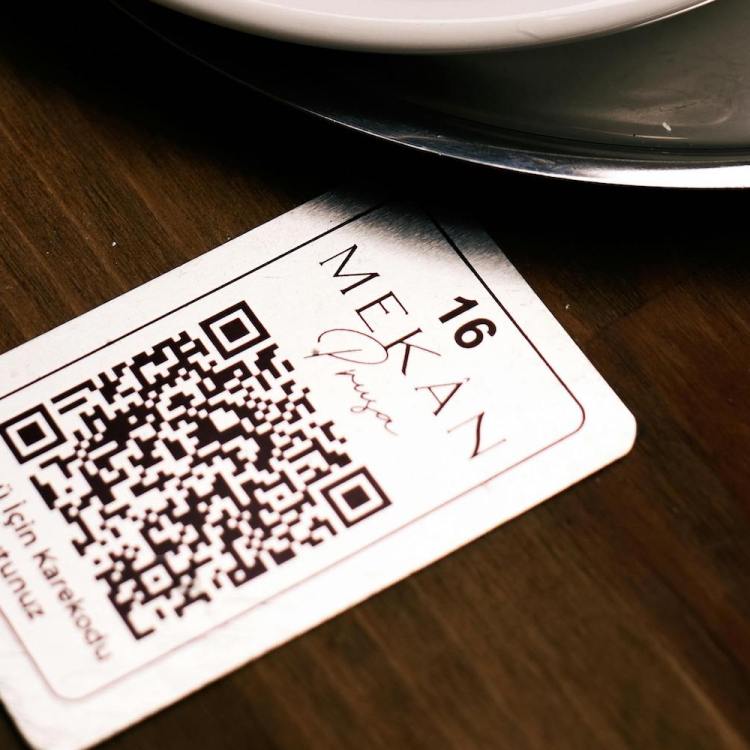Until this time last week, I had never smoked a piece of meat.
I had, of course, eaten a piece of smoked meat. Many, in fact. And I had found a good number of those meats to be more tender and delicious than their char-grilled equivalents.
There is science behind this: by cooking a piece of pork or beef at low temps over the course of many hours, the collagen in the meat gradually breaks down and disperses, butter-like, throughout the cut. That ropey, tough stuff that can ruin a steak? Smoked, that becomes a delicious, fatty goo that “falls off the bone” and makes eyes involuntarily roll backwards in sockets.
There is also the flavor of the smoke itself. The slow-burning woodchips in a smoker aren’t there for fuel, but rather, flavor. While the low-and-slow heat does the cooking, the wood’s cellulose caramelizes and festers its way into the meat, imparting everything with a distinct “smokiness” that varies according to the type of wood you use.
Of course, this probably all sounds complicated and arduous in a way that firing up your grill may not. But the truth is quite the opposite: the process takes hours, yes, but those hours are largely passive. Depending on your methods — which we’ll discuss below — smoking can be a true set-it-and-forget operation; unlike grilling, there is no meticulous minding of coals and flipping of patties while your friends drink beer, play lawn games and compare crypto portfolios.
Simple or not, though, it helps to commit a few rules and guidelines to memory before you get started. For that, we dialed Chef Hugh Mangum, pitmaster at NYC smokehouse Mighty Quinn’s, for some dos and don’ts on smoking a piece of meat to perfection.
And then we gathered our tools and put them to the test. Results below.
 From left: Weber Kettle grill; Masterbuilt Pro Dual Fuel; Masterbuilt Electric
From left: Weber Kettle grill; Masterbuilt Pro Dual Fuel; Masterbuilt Electric
THE APPARATUS
There’s a good chance you own a smoker already and don’t even know it: your charcoal kettle grill. Otherwise, there are a ton of venerable units that utilize propane, charcoal and even electricity that you can pick up in the $100-$200 range. Below, Chef Mangum discusses the benefits of each.
The “Purist” Way
“I tend to be a purist,” says Mangum. At Mighty Quinn’s, that translates to a 7,000-lb. stick burner that only burns real wood. “But in terms of what I use at home, it’s a Weber kettle grill. To me, it’s the most utilitarian, the best bang for your buck. If you need to replace the grates on it, it’s 20 bucks at a hardware store or from Amazon. And you can build it into a smoker as well.”
To do that, as Mangum puts it, “You work it offset.” Start your fire in a chimney and set it off to one side. Then add some wood chips (we soaked ours in water first, which helps them burn slowly) and place your meat far over to the other side so it’s not over direct heat. Once that’s done, put the lid on and set the air ventilation — that spindle that turns on top of the Weber kettle — to the side where the meat is. That way, it does the “draw” for you, pulling the smoke and the heat over your meat.
From there, you simply replenish your coals and wood as necessary to maintain a consistent heat inside of the kettle. You’ll be aiming for somewhere between 215 and 250 degrees, depending on the cut of meat and how soon you want to eat it.
The Easy Way
For our test run, we used two types of smokers. The first was a Masterbuilt Pro Charcoal and Propane Dual Fuel. The two-door setup means you can replenish wood and coal without opening the compartment where the bounty is. “Temperature fluctuation, whether it’s up or down, is the biggest killer and what hurts the meat the most,” says Mangum. Be forewarned, though: as with your grill, propane can introduce unwanted flavors for diners with discerning palates.
The Idiotproof Way
If you really want to turn off your brain and let the smoker do the work, you can’t beat an electric, like this 30-inch-tall Masterbuilt with a digital readout. It regulates the heat automatically, and it also goes places where others smokers simply cannot … like, say, the balcony of a New York City apartment. “I personally would go for an electric over a propane,” says Mangum. “One, it’s not combustible. And while you’re not getting any [flavor] enhancement other than the smoke, you’re also not getting any bad flavor from your heat source.”
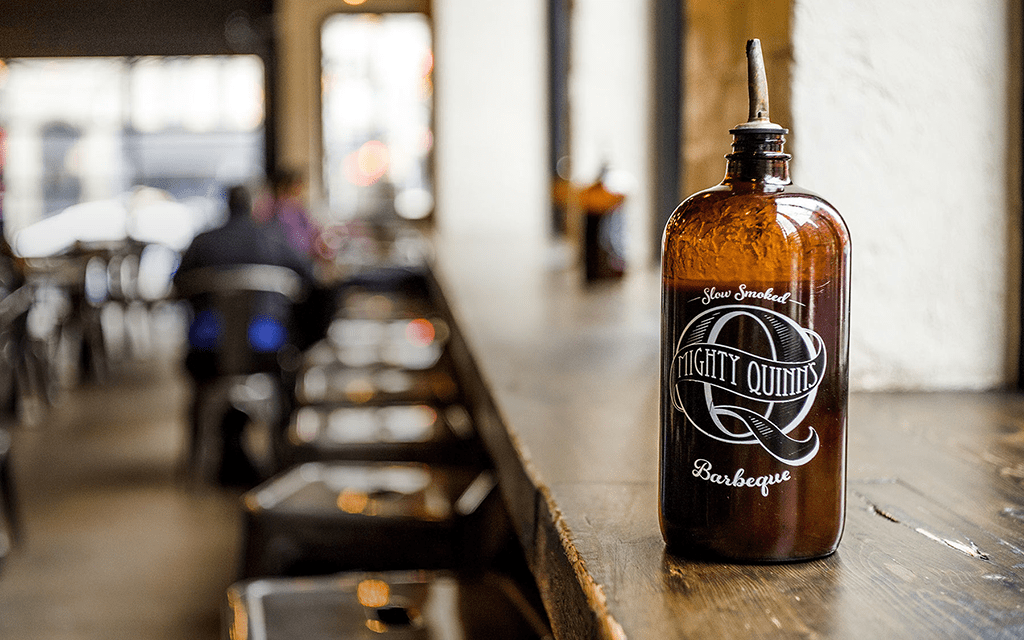
Mighty Quinn’s house BBQ sacue (Might Quinn’s)
THE ACCESSORIES
In addition to your smoker, you’ll want to pick up a few essentials to help ease the smoking process. Here are Mangum’s picks.
Mighty Quinn’s Original BBQ Sauce: Obviously.
A good pair of tongs: “I tend to go for the 10-inch. I don’t like those 12- to 14-inch tongs. I like to have more control.”
A short-handled wooden pizza peel: “It’s the best thing for getting things on and off the grill, hands down. You can literally slide the meat on and off without having to destroy it. And it makes for a great presentation as well.”
Nitrile gloves: “Like the black or medical blue gloves. They’re 8mm, versus I think 2mm on the clear gloves. They just give you a little added protection and resilience when you’re dealing with hot meat. And they don’t break down from grease as much.”
A loaf pan: “Put that in your cooking chamber filled with either water or an aromatic liquid, which will help create humidity and moisture.”
A chimney starter: “If you’re adding cold coals to a fire, obviously you’re going to bring the cooking chamber’s temperature down drastically. They’re cheap and they’re relatively indestructible. Pour off your hot coals from that chimney starter into your cooking chamber, leaving a few coals behind, and then just add coals a couple handfuls at a time.”
A spray bottle filled with an aromatic: “For example, if you’re smoking pork, apple cider. Every time you check the meat, give it a little spritz.”
And a simple, classic meat thermometer: It tells you right there on the dial when your meat — whether it’s beef, pork or poultry — is finished.
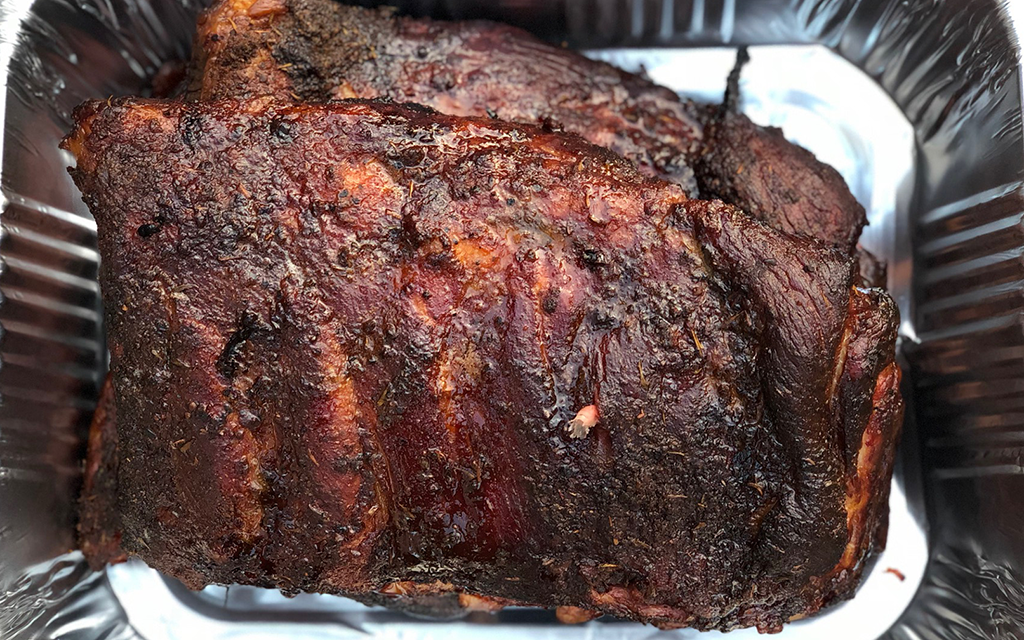 The yield of our maiden smoking voyage. Not too shabby. (Walker Loetscher)
The yield of our maiden smoking voyage. Not too shabby. (Walker Loetscher)
THE PRO TIPS
Luckily, smoking meat leaves a huge margin for error. If you overcook your ribs by an hour, they will still deliver more flavor and a silkier texture than just about anything that comes out of your oven or off a grilltop. (Trust us; we did it.) Keep these dos and don’ts from Mangum in mind, though, and you’ll have a leg up on the competition.
On the biggest mistake every amateur smoker makes: “Checking the meat too often. Every time you open the smoker or grill up, you’re letting out enormous amounts of heat, but also moisture. And that moisture and humidity is what helps keep the meat nice and moist and the cooking process linear.”
On how often you should check: “Every time you finish a beer. That would give you between 30 and 45 minutes, presumably. If you’re checking it more than that, you’re going to dry out the cooking chamber and lose your consistent heat.”
On the single most important ingredient: “Getting a high-quality meat. I think the most important thing is to vet who you’re purchasing from. Find a reputable purveyor who’s practicing really great humane practices, because happy animals just taste better. Find someone local who’s doing that. Just talk to the butcher and ask for the best cuts and who’s doing it best.”
On respecting your meat: “A lot of guys get caught up in the rubs and the sauces, which is fun. But it’s kind of like that whole golf terminology of ‘drive for show and putt for the dough’: if you get a perfect, beautiful, fatty brisket, you’re going to get much better results than if you get a cheap brisket and decorate it with a lot of sauce and rub.”
On the wood you should use: “I would steer everyone towards the exact same wood for your base heat, which is oak. It makes the best long-burning, clean-burning fire. For pure flavor purposes, there are three specific woods that I would add in chip or chunk form. For long smokes, Texas-style brisket, you’d want to add some pecan. It’s amazing, though very hard to find. And then we bring in cherry and apple wood as well. They’re great for pork and spare ribs.”
On the wood you should avoid: “I stay away from mesquite unless it’s for grilling purposes. It’s almost too assertive, and if you’re using a really great high-quality meat that’s got good fat content, you don’t want to mask that. The smoke should cuddle the meat, not smother it.”
On heat: “I typically dial in around 215 to 220 degrees. That being said, if you were to build a chart on your meats, pork and chicken are going to be much more resilient to higher heat, than, say, a brisket.”
On the bottle of wine to serve with dinner: “Ravage Cabernet Sauvignon. My wife and I opened it up and we literally were blown away by how well it pairs with assertive smoked meats. It’s a really special wine in that it’s a Cabernet but doesn’t necessarily read like the typical Cabernet. It’s got a lot of dark berry and vanilla flavors, which pair really well with spice and smoke. You get relatively soft tannins, but it has a super intense flavor. At this point, I’ve probably paired it with 6-7 recipes, and it’s been an awesome utilitarian wine that sings with all of those meats.”
On the meat a novice smoker should try first: “If it’s your first time out, I would always go for pork butt. You can smoke that for 12 to 18 hours, get it to an internal temperature of 185 degrees and pull it apart. And worse case, if you happen to have hammered it a bit, you can dress it with some sauce. It will still be really good.”
On the one you might need to work up to: “If you mess a brisket up, you’re going to be eating sawdust, and there’s no way to hide that. If you go above 220, you’re going to render the fat out so fast that you’ll end up drying the meat out and not using that internal fat self-baste. Brisket will expose you for the fraud you are more than any other cut of meat.”
Nota bene: If you buy through these links, InsideHook may earn a small share of the profits
Every Thursday, our resident experts see to it that you’re up to date on the latest from the world of drinks. Trend reports, bottle reviews, cocktail recipes and more. Sign up for THE SPILL now.
